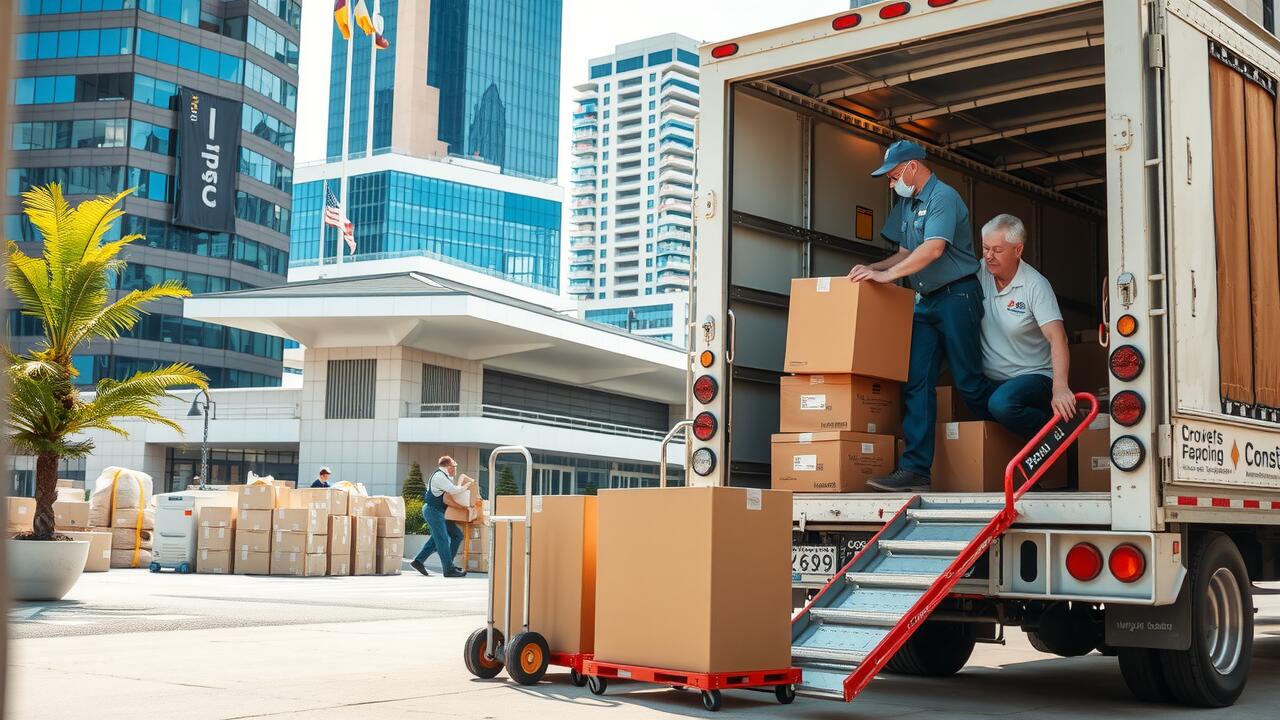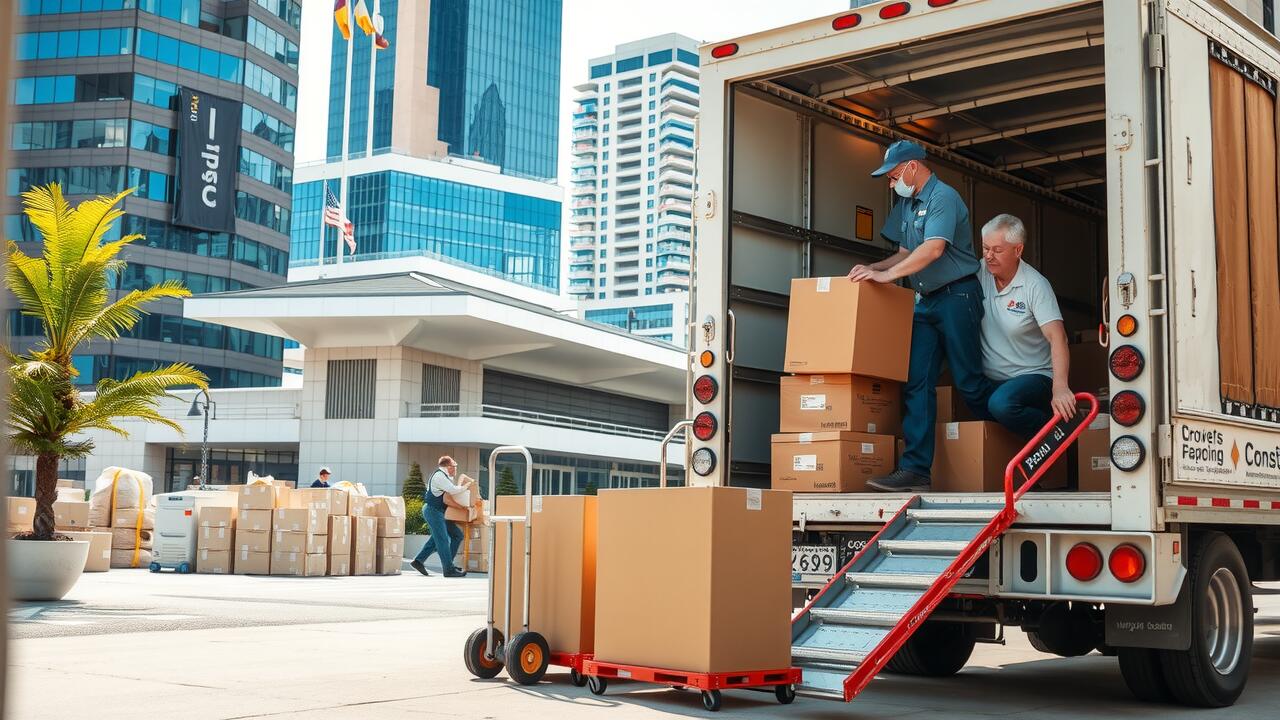
Table Of Contents
Coordinating with Building Management
Effective coordination with building management is crucial when planning a commercial move in Washington, DC. This process involves notifying the management team well in advance to secure necessary access to elevators and loading docks. Understanding the specific regulations and protocols of the building can help avoid disruptions on moving day. Communication with building staff ensures that any potential conflicts are addressed early, leading to a smoother transition.
In the District of Columbia, United States Commercial Moving often entails adhering to specific guidelines laid out by local authorities. It is essential to check for any permits required for street use or loading zones surrounding the building. Additionally, establishing a clear timeline with building management can prevent time-related challenges during the move. By maintaining open lines of communication, it becomes easier to navigate the complexities involved in relocating a business.
Securing Necessary Permissions and Access
Before initiating a commercial move in the District of Columbia, securing necessary permissions and access is crucial. This may involve coordinating with building management at both the current and new locations to ensure that all protocols are followed. Obtaining any required permits or access cards can prevent disruptions on moving day. It’s essential to clarify any restrictions or rules that could impact the moving process, such as specific hours for moving or parking regulations.
In addition to liaising with building management, informing local authorities about your move can be helpful. This may include notifying them of any street closures or parking needs. Being proactive in addressing these logistical elements can streamline the moving process. Failing to secure the proper permissions could lead to delays or complications, making careful planning a vital aspect of any commercial move in the District of Columbia, United States Commercial Moving.
Handling Technology and Data
During a commercial move in the District of Columbia, United States Commercial Moving, careful planning around technology and data management is essential. Businesses often rely on various tech systems for daily operations, and ensuring their smooth transition can prevent downtime. It is advisable to create an inventory of all technology assets prior to the move. This list should include computers, servers, phones, and any specialized equipment. Engaging IT professionals to handle the disconnection and reconnection of devices will help streamline the process and minimize disruptions.
Safeguarding sensitive information should be a top priority throughout the moving process. Data breaches can have severe consequences for businesses and their clients, making it necessary to take protective measures seriously. Use encryption and secure transportation methods for any physical data storage devices. Additionally, consider erasing data from any equipment that will not be relocated. Educating employees on data security protocols during the move is also crucial to maintain compliance and protect the organization's reputation.
Safeguarding Sensitive Information
During a commercial move in the District of Columbia, United States Commercial Moving carries the responsibility of protecting sensitive information. It is crucial to identify all data that needs special handling, including client records, financial documents, and proprietary business files. Ensure that these materials are packed securely and transported with the highest level of care. Consider utilizing locked boxes or encrypted digital storage for valuable information.
While packing, it is important to designate specific personnel to oversee the handling of sensitive materials. These designated team members should be trained in best practices for data protection. Clear communication regarding the process will further enhance security. Establishing a plan for the transfer and storage of confidential data at the new location fortifies the integrity of the information throughout the moving process.
Unpacking and Setting Up in the New Location
Unpacking and setting up in your new location requires a strategic approach to ensure efficiency and minimal disruption. Begin by identifying the most crucial areas that need immediate attention, such as workspaces, break rooms, and essential service areas. Prioritize unpacking equipment and supplies that your team relies on daily. Designate specific teams or individuals for various sections of the office to streamline the process. This collaborative effort can significantly speed up the transition, allowing everyone to adapt to the new environment more quickly.
As you settle into the new space, take time to assess the layout and make adjustments based on team needs. Arrange desks, chairs, and technology in a way that promotes collaboration and productivity. Consider the flow of movement within the office to avoid congestion. In the District of Columbia, United States Commercial Moving presents unique challenges, such as navigating local regulations and ensuring accessibility. By focusing on an organized unpacking and setup strategy, you can create an effective and inviting work environment.
Tips for an Efficient Setup
An efficient setup after a commercial move requires organized planning and clear communication among team members. Design a floor plan that outlines the arrangement of furniture and equipment before the actual move. This preparation allows for a smoother transition and minimizes confusion on moving day. Ensure that each employee knows their designated area along with any essential items they need to unpack first in the new space. Consider labeling boxes with the department name and a brief description of the contents, which will help streamline the unpacking process.
Access to technology and workspace essentials is crucial for maintaining productivity. Set up a designated area for IT support to assist with the installation of technology and ensure all systems are functional at the new location. This is particularly important in the District of Columbia, United States Commercial Moving, where businesses rely heavily on efficient technology setup. Create a timeline to prioritize this process, making it easier for teams to resume their work without unnecessary delays. A well-structured approach can lead to a rapid and effective transition into the new environment.
FAQS
What should I do first when planning a commercial move in Washington, DC?
The first step is to coordinate with building management to understand any specific requirements or restrictions for moving in and out of your current and new locations.
How do I secure necessary permissions and access for my commercial move?
You can secure permissions by reaching out to your building management or landlord to request access for your moving company and to ensure you have the appropriate permits for loading and unloading.
What steps should I take to handle technology and data during the move?
It’s important to create a detailed inventory of your technology, ensure proper backup of data, and consult with your IT team to develop a plan for safely relocating equipment and systems.
How can I safeguard sensitive information during the moving process?
To safeguard sensitive information, implement secure packing methods, use encrypted storage solutions, and limit access to sensitive documents to trusted personnel only during the move.
What tips can help ensure an efficient setup in the new location?
To ensure an efficient setup, create a detailed floor plan ahead of time, label boxes clearly, prioritize unpacking essential items, and communicate with your team about the new layout and any changes.

